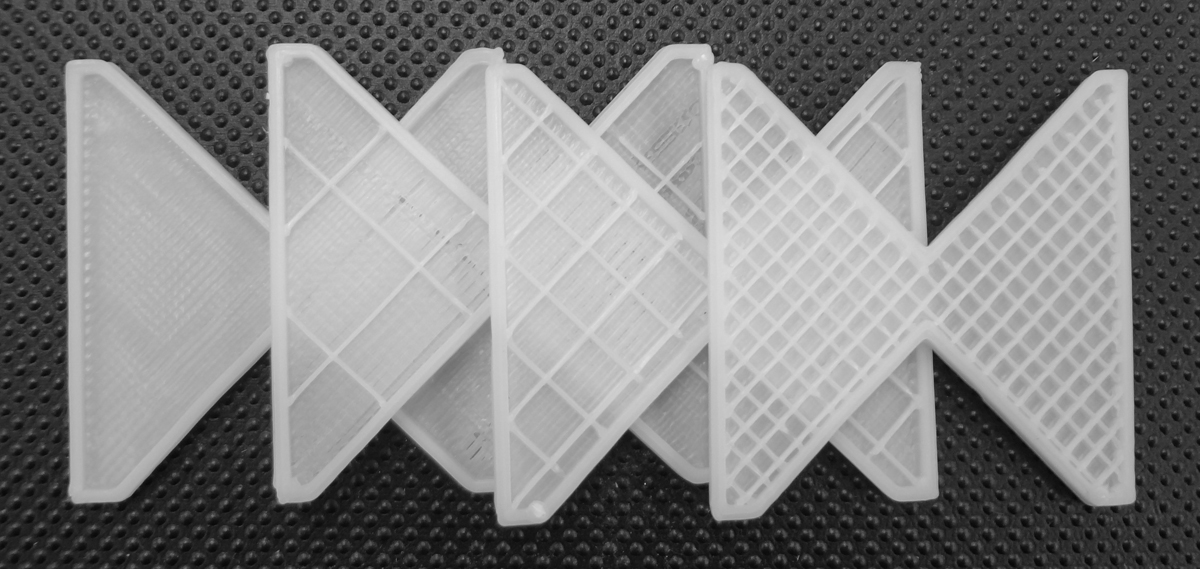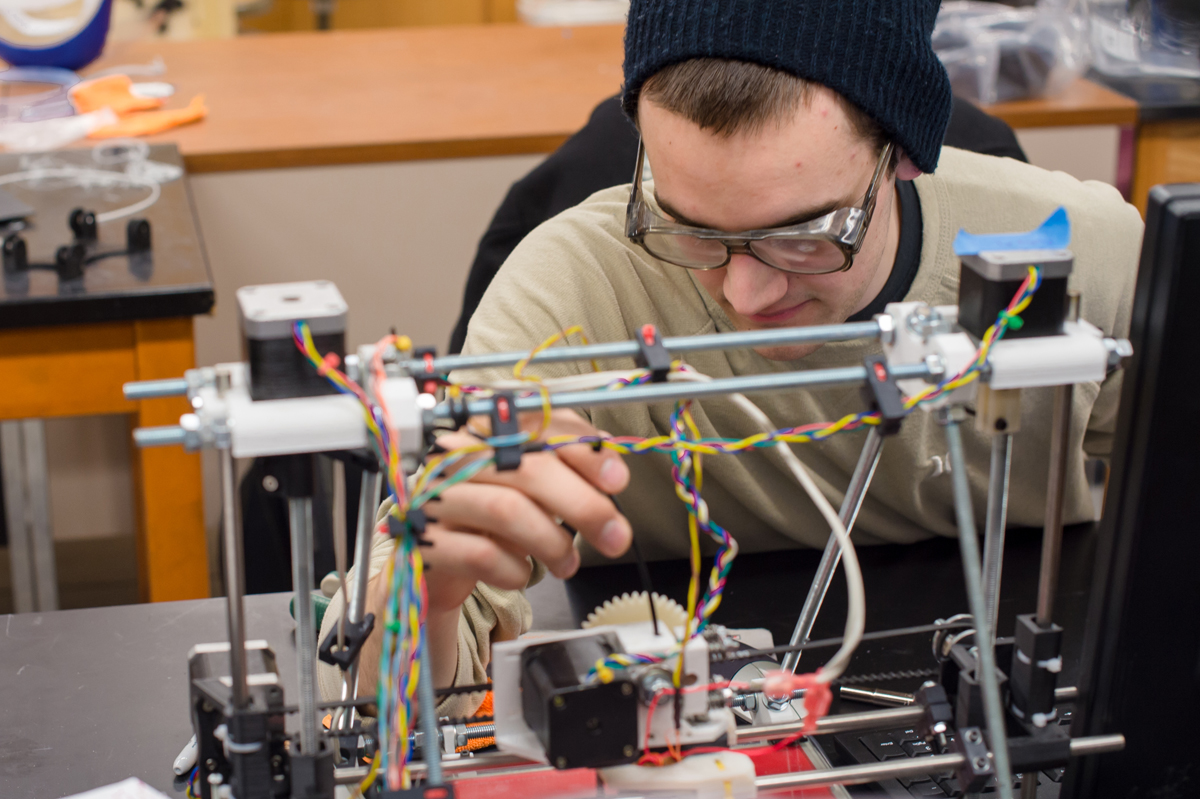3D printing lowers environmental impact, says study
October 5, 2013

3D
printing can save energy by using less raw material. These partially
printed Swiss children’s blocks show how a printer can partly fill the
interior of an item with plastic while maintaining its strength.
(Credit: Samuel Bernier)
That’s according to a study led by Joshua Pearce, an associate professor of materials science and engineering/electrical and computer engineering at Michigan Technological University.
The team conducted life-cycle impact analyses on three products: an orange juicer, a children’s building block and a waterspout. The cradle-to-gate analysis of energy use went from raw material extraction to one of two endpoints: entry into the U.S. for an item manufactured overseas or printing it a home on a 3D printer.
Making the items on a basic 3D printer took 41 to 64 percent less energy than making them in a factory and shipping them to the U.S., the study found.

D Printing in Action
John Laureto printing a gear on a Rep Rap 3D printer in Joshua Pearce’s lab at Michigan Tech (credit: Sarah Bird)
John Laureto printing a gear on a Rep Rap 3D printer in Joshua Pearce’s lab at Michigan Tech (credit: Sarah Bird)
Pearce’s team ran their analysis with two common types of plastic filament used in 3D printing, including polylactic acid (PLA). PLA is made from renewable resources, such as cornstarch, making it a greener alternative to petroleum-based plastics.
Less pronounced positive environmental results are observed with ABS, which demands higher temperatures fort he print bed and extruder.
The team also did a separate analysis on products made using solar-powered 3D printers, which drove down the environmental impact even further.
According to the paper, “This was a study on a limited number of products and future work is necessary to quantify the CEDs and emissions of distributed vs conventional manufacturing of other types of products. An ideal study would consist of a cradle-to-grave analysis for both conventional and distributed manufacturing, including all infrastructure, packaging, and transportation.”.
The study did not cover environmental impacts of discarded plastic materials.
(¯`*• Global Source and/or more resources at http://goo.gl/zvSV7 │ www.Future-Observatory.blogspot.com and on LinkeIn Group's "Becoming Aware of the Futures" at http://goo.gl/8qKBbK │ @SciCzar │ Point of Contact: www.linkedin.com/in/AndresAgostini
 Washington
Washington